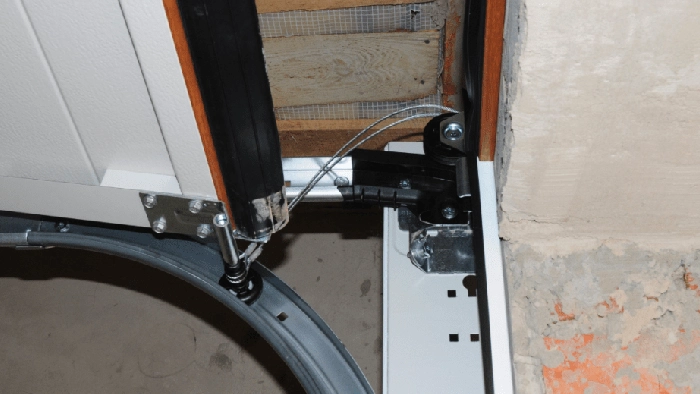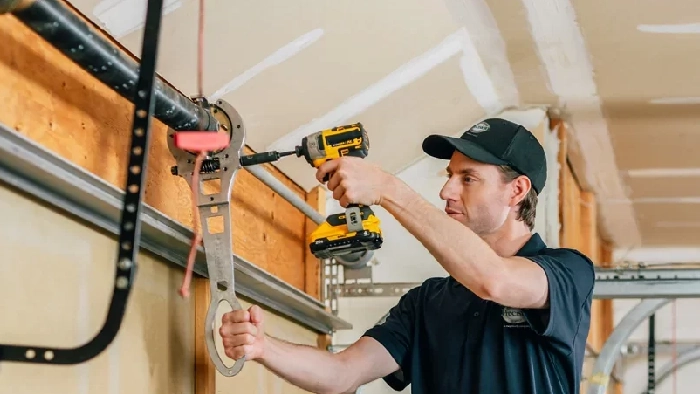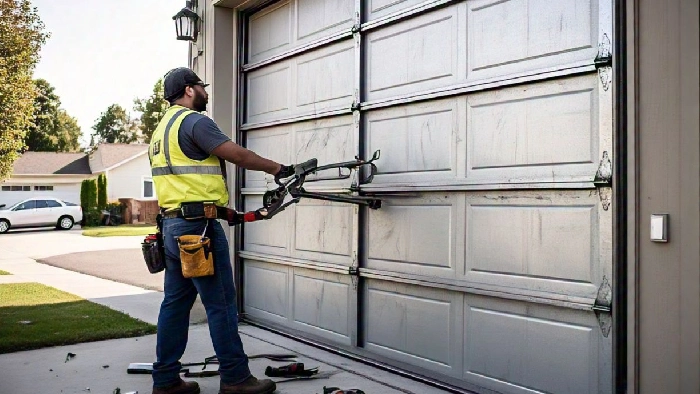The Risks and Rewards of Replacing Your Own Garage Door Spring
Introduction
When it comes to home maintenance, few tasks seem as daunting—and potentially dangerous—as replacing a garage door spring. A malfunctioning spring can render your garage door inoperable, leading many homeowners to consider a DIY approach. But is this a wise choice? In this comprehensive article, we’ll explore The Risks and Rewards of Replacing Your Own Garage Door Spring, giving you commercial garage door services the insights you need to make an informed decision. From safety concerns to cost-saving benefits, we’ll cover all aspects of this home improvement task.
The Risks and Rewards of Replacing Your Own Garage Door Spring
Garage doors are heavy and complex systems that rely on springs for proper operation. These springs are under extreme tension, which makes handling them particularly risky without the right knowledge and tools.
What Are Garage Door Springs?
Before delving into the risks and rewards, it's essential to understand what garage door springs are and their functions.
1. Types of Garage Door Springs
There are primarily two types of garage door springs: torsion springs and extension springs.
- Torsion Springs: Located above the closed garage door, these springs wind up as the door closes.
- Extension Springs: Found on either side of the door, these springs stretch when the door opens.
Each type plays a crucial role in counterbalancing the weight of the garage door.
Why Do Garage Door Springs Break?
Several factors contribute to spring failure:
- Wear and Tear: Over time, constant use can lead to fatigue in the metal.
- Rust: Moisture can corrode the springs, weakening their structure.
- Improper Installation: Incorrectly installed springs may fail prematurely.
Understanding why these components break is essential for addressing issues before they escalate.
The Dangers of DIY Spring Replacement
While saving money might be appealing, replacing your own garage door spring isn't without its hazards.
1. Risk of Injury
Injuries from improperly handling garage door springs can be severe:
- Lacerations
- Broken bones
- Eye injuries
Always wear protective gear when attempting any repairs.
2. Equipment Failure
Using subpar tools or lackluster techniques can lead to further malfunctions or accidents.

3. Potential for Property Damage
An incorrect installation might not only harm you but could also damage your vehicle or property.
Cost Consideration: DIY vs Professional Services
One significant allure of tackling spring replacement yourself is cost savings. However, weighing this against professional services is vital.
1. Average Cost for Professionals
Professional garage door services often range between $200-$500 for spring replacements depending on location and complexity. In Los Angeles, for instance, customers frequently search for garage door services Los Angeles CA or best garage door repair services near me for competitive quotes.
2. DIY Costs: Tools and Parts
If you're considering a DIY approach:
- Torsion spring sets typically cost between $30-$100.
- Extension springs usually range from $20-$50 each.
Keep in mind that additional costs may arise if you need specialized tools such as winding bars or safety glasses.
Evaluating Your Skill Level
One crucial aspect before embarking on this task is evaluating your skills honestly.
1. Basic Mechanical Skills Required
You should be comfortable with basic mechanics if you decide to replace your own spring—knowing how to work with tools is essential!
2. Seeking Help from Experts
If you're unsure about your capabilities, contacting professional garage door services or garage door repairs is always recommended.

Step-by-Step Guide: Replacing Your Own Garage Door Spring
If you've decided that you're ready to tackle this project yourself, here's a guide:
1. Gather Necessary Tools
You'll need:
- Safety goggles
- Winding bars
- Socket wrench
- Ladder
2. Disconnect Power Supply
Safety first! Ensure that all electrical connections are disconnected before beginning any work on your garage door system.
3. Remove Old Springs
Carefully unwind torsion springs using winding bars while maintaining pressure on them until they're completely released.
4. Install New Springs
Follow manufacturer instructions closely when installing new springs; misalignment could cause issues later on.
Maintenance Tips Post-Replacement
After successfully replacing your garage door springs, maintenance becomes key to longevity:

- Regularly lubricate moving parts.
- Inspect hardware for rust or wear every six months.
Engaging local commercial garage door services can provide valuable ongoing support as well!
Common Misconceptions About Garage Door Spring Replacement
Let's clear up some myths surrounding this process:
1. "All Springs Are Interchangeable"
Not true! Different brands may require specific types of replacement parts tailored specifically to their design.
2. "Replacing One Spring Is Enough"
If one spring has failed due to age or wear, it's advisable also to replace its counterpart since they have likely experienced similar stress levels over time.
FAQs
1. What are signs my garage door spring needs replacement?
Signs include difficulty opening/closing the door, visible gaps in coils (for extension springs), or loud noises during operation.
2. How much does it typically cost for professional installation?
Costs vary by location but generally range from $200-$500 depending on service complexity.
3. Can I use any type of spring for my garage?
No; always refer to manufacturer specifications when selecting replacement parts for compatibility reasons!
4. Is it safe to attempt replacing my own garage door spring?
While possible if you're skilled with mechanics, it's often safer to hire professionals due to injury risks involved in handling high-tension components.
5. How long do new springs last?
Typically around 7–9 years depending upon usage frequency and other factors like humidity levels affecting rust formation!
6: Can I find affordable repair services nearby?
Absolutely! Searching online using terms such as “garage door services near me” will yield plenty of options suited toward budget-conscious homeowners looking at getting quality repairs done quickly!
Conclusion
Navigating through The Risks and Rewards of Replacing Your Own Garage Door Spring involves careful consideration—balancing potential savings against safety concerns is paramount! While undertaking this project independently may appeal due diligence must be employed throughout all stages from assessment through execution ensuring both functionality & security remain intact within your home environment ultimately benefiting both yourself & family alike!
Remember that even if you opt for a DIY route initially; enlisting help from local experts like garage door opener repairs specialists ensures peace-of-mind knowing everything remains operating smoothly year-round!